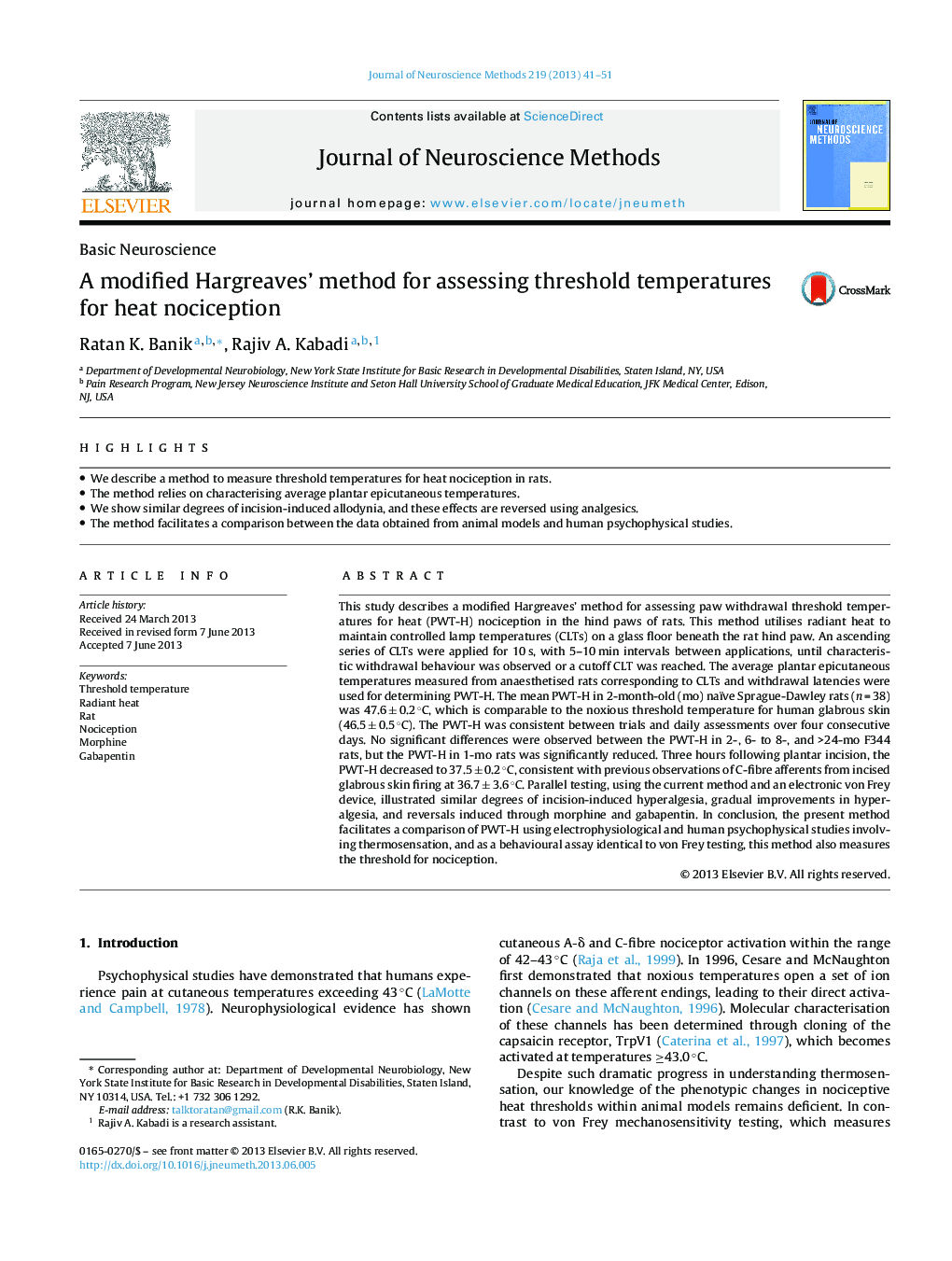| Article ID | Journal | Published Year | Pages | File Type |
|---|---|---|---|---|
| 4335045 | Journal of Neuroscience Methods | 2013 | 11 Pages |
•We describe a method to measure threshold temperatures for heat nociception in rats.•The method relies on characterising average plantar epicutaneous temperatures.•We show similar degrees of incision-induced allodynia, and these effects are reversed using analgesics.•The method facilitates a comparison between the data obtained from animal models and human psychophysical studies.
This study describes a modified Hargreaves’ method for assessing paw withdrawal threshold temperatures for heat (PWT-H) nociception in the hind paws of rats. This method utilises radiant heat to maintain controlled lamp temperatures (CLTs) on a glass floor beneath the rat hind paw. An ascending series of CLTs were applied for 10 s, with 5–10 min intervals between applications, until characteristic withdrawal behaviour was observed or a cutoff CLT was reached. The average plantar epicutaneous temperatures measured from anaesthetised rats corresponding to CLTs and withdrawal latencies were used for determining PWT-H. The mean PWT-H in 2-month-old (mo) naïve Sprague-Dawley rats (n = 38) was 47.6 ± 0.2 °C, which is comparable to the noxious threshold temperature for human glabrous skin (46.5 ± 0.5 °C). The PWT-H was consistent between trials and daily assessments over four consecutive days. No significant differences were observed between the PWT-H in 2-, 6- to 8-, and >24-mo F344 rats, but the PWT-H in 1-mo rats was significantly reduced. Three hours following plantar incision, the PWT-H decreased to 37.5 ± 0.2 °C, consistent with previous observations of C-fibre afferents from incised glabrous skin firing at 36.7 ± 3.6 °C. Parallel testing, using the current method and an electronic von Frey device, illustrated similar degrees of incision-induced hyperalgesia, gradual improvements in hyperalgesia, and reversals induced through morphine and gabapentin. In conclusion, the present method facilitates a comparison of PWT-H using electrophysiological and human psychophysical studies involving thermosensation, and as a behavioural assay identical to von Frey testing, this method also measures the threshold for nociception.
